-

-
-
NOVA : Season 41
-
Air date: 11 Sep '13 - 22 episodesPBS' premier science series helps viewers of all ages explore the science behind the headlines. Along the way, NOVA demystifies science and technology, and highlights the people involved in scientific pursuits.
-
-
List of Episodes (22)
-
NOVA (1974)

-
1. Ground Zero Supertower
11 Sep '13NOVA kicks off the fall season with a return to Ground Zero to witness the final chapter in an epic story of engineering, innovation, and the perseverance of the human spirit. “Ground Zero Supertower” examines the new skyscraper, One World Trade Center, rising up 104 stories and 1,776 feet from the site where the Twin Towers once stood. NOVA also goes underground to see another engineering marvel taking shape here: the construction of the National September 11 Memorial Museum that will house alm
-
NOVA (1974)
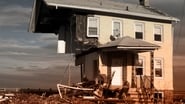
-
2. Megastorm Aftermath
09 Oct '13In October 2012, superstorm Sandy cut a path of devastation across the Caribbean and the East Coast, killing hundreds and doing tens of billions of dollars in damage. Now, one year after Sandy’s deadly strike, NOVA follows up on its 2012 film “Inside the Megastorm” with a fresh investigation of the critical questions raised by this historic storm: Was Hurricane Sandy a freak combination of weather systems? Or are hurricanes increasing in intensity due to a changing climate and rising seas? How c
-
NOVA (1974)

-
3. Making Stuff Faster
16 Oct '13Ever since humans stood on two feet we have had the basic urge to go faster. But are there physical limits to how fast we can go? David Pogue wants to find out, and in "Making Stuff Faster," he’ll investigate everything from electric muscle cars and the America’s cup sailboat to bicycles that smash speed records. Along the way, he finds that speed is more than just getting us from point A to B, it's also about getting things done in less time. From boarding a 737 to pushing the speed light trave
-
NOVA (1974)

-
4. Making Stuff Wilder
23 Oct '13What happens when scientists open up nature's toolbox? In "Making Stuff Wilder," David Pogue explores bold new innovations inspired by the Earth's greatest inventor, life itself. From robotic "mules" and "cheetahs" for the military, to fabrics born out of fish slime, host David Pogue travels the globe to find the world’s wildest new inventions and technologies. It is a journey that sees today's microbes turned into tomorrow’s metallurgists, viruses building batteries, and ideas that change not j
-
NOVA (1974)

-
5. Making Stuff Colder
30 Oct '13Cold is the new hot in this brave new world. For centuries we've fought it, shunned it, and huddled against it. Cold has always been the enemy of life, but now it may hold the key to a new generation of science and technology that will improve our lives. In "Making Stuff Colder," David Pogue explores the frontiers of cold science from saving the lives of severe trauma patients to ultracold physics, where bizarre new properties of matter are the norm and the basis of new technologies like levitat
-
NOVA (1974)

-
6. Making Stuff Safer
06 Nov '13The world has always been a dangerous place, so how do we increase our odds of survival? In "Making Stuff Safer," David Pogue explores the cutting-edge research of scientists and engineers who want to keep us out of harm’s way. Some are countering the threat of natural disasters with new firefighting materials and safer buildings. Others are at work on technologies to thwart terrorist attacks. A next-generation vaccine will save millions from deadly disease. And innovations like smarter cars and
-
NOVA (1974)

-
7. Cold Case JFK
13 Nov '13For decades, the assassination of John F. Kennedy has fueled dark rumors of conspiracies and mishandled evidence. Now, fifty years later, NOVA asks: Could modern investigators do better? We’ll see how state-of-the art forensic tools would be applied to the investigation were it to happen today. At the same time, NOVA takes a critical look at contemporary cases, like the murders of Nicole Brown Simpson and Ronald Goldman, to reveal how charges of evidence mishandling and human error can mar even
-
NOVA (1974)

-
8. At the Edge of Space
20 Nov '13Between the blue sky above and the infinite blackness beyond lies a frontier that scientists have only just begun to investigate. In "At the Edge of Space," NOVA takes viewers on a spectacular exploration of the Earth-space boundary that's home to some of nature's most puzzling and alluring phenomena: the shimmering aurora, streaking meteors, and fleeting flashes that shoot upwards from thunderclouds, known as sprites. Only discovered in 1989, sprites have eluded capture because they exist for a
-
NOVA (1974)
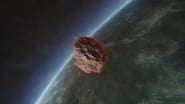
-
9. Asteroid: Doomsday or Payday?
20 Nov '13The asteroid that exploded over Siberia—injuring more than 1,000 and damaging buildings in six cities—was a shocking reminder that Earth is a target in a cosmic shooting range. From the width of a football field to the size of a small city, these space rocks have the potential to be killers. In a collision with Earth, they could set off deadly blast waves, raging fires and colossal tidal waves. But some audacious entrepreneurs look up at asteroids and see payday, not doomsday. Some asteroids are
-
NOVA (1974)

-
10. Alien Planets Revealed
08 Jan '14It’s a golden age for planet hunters: NASA's Kepler mission has identified more than 3,500 potential planets orbiting stars beyond our Sun. Some of them, like a planet called Kepler-22b, might even be able to harbor life. How did we come upon this distant planet?
-
NOVA (1974)

-
11. Zeppelin Terror Attack
15 Jan '14NOVA investigates the technology behind the World War One Zeppelin bombing campaigns, both the airships themselves and the weapons used to try to bring them down.
-
NOVA (1974)
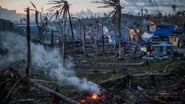
-
12. Killer Typhoon
22 Jan '14It was the strongest cyclone to hit land in recorded history. On November 8, 2013, Typhoon Haiyan slammed into the Philippines, whipping the low-lying and densely-populated islands with 200 mph winds and sending a two-story-high storm surge flooding into homes, schools, and hospitals. It wiped villages off the map and devastated cities, including the hard-hit provincial capital Tacloban. Estimates count more than 5,000 dead and millions homeless. What made Haiyan so destructive? Meteorologists c
-
NOVA (1974)

-
13. Ghosts of Murdered Kings
29 Jan '14In the rolling hills of Ireland's County Tipperary, a laborer harvesting peat from a dried-up bog spots the remnants of a corpse and stops his machine just in time, revealing a headless torso almost perfectly preserved and stained dark brown by the bog. Archeologists recognize the corpse as one of Europe's rare bog bodies: prehistoric corpses flung into marshes with forensic clues often suggesting execution or human sacrifice. The corpse will eventually be dated to the Bronze Age, over 3,000 yea
-
NOVA (1974)

-
14. Roman Catacomb Mystery
05 Feb '14Beneath the streets of Rome lies a city of the dead known as the Catacombs—a labyrinth of tunnels, hundreds of miles long, lined with the neatly laid out tombs of the citizens of ancient Rome. Here, in 2002, maintenance workers fixing a broken water main stumbled upon a previously unknown burial chamber like none other in the complex. It was a mass grave of hundreds of bodies spread across six roughly carved caverns, locked away for nearly 2000 years. Who were these people? And can we discover,
-
NOVA (1974)
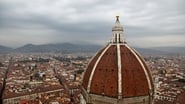
-
15. Great Cathedral Mystery
12 Feb '14The dome that crowns Florence’s great cathedral of Santa Maria del Fiore—the Duomo—is a towering masterpiece of Renaissance ingenuity and an enduring source of mystery. Still the largest masonry dome on earth after more than six centuries, it is taller than the Statue of Liberty and weighs as much as an average cruise ship. Historians and engineers have long debated how its secretive architect, Filippo Brunelleschi, managed to keep the dome perfectly aligned and symmetrical as the sides rose and
-
NOVA (1974)

-
16. Wild Predator Invasion
02 Apr '14Over the last few centuries we have shot, trapped, and skinned the predators that formerly thrived at the top of the food chain in the wild. Wild bears, wolves, and big cats are all in retreat, and a growing number of scientists are discovering that by eliminating predators, we have changed the environment. Removing predators from the wild has thrown ecosystems off-kilter, triggering domino effects that scientists are just beginning to understand. In "Wild Predator Invasion," NOVA follows scient
-
NOVA (1974)

-
17. Inside Animal Minds: Bird Genius
09 Apr '14When it comes to intelligence, we humans are clearly the most gifted animals around. But what make us so special? Is it our ability to make and use tools? To solve complex problems? Or plan for the future? It might seem that way, but today, researchers are discovering other creatures with impressive brains that have mastered all those skills. Surprisingly, many are bird brains. Crows bend and shape sticks to create custom-made spears for hunting grubs, and they are just one among a growing list
-
NOVA (1974)

-
18. Inside Animal Minds: Dogs & Super Senses
16 Apr '14What is it like to be a dog, a shark, or a bird? Long the subject of human daydreams, this question is now getting serious attention from scientists who study animal senses. The senses define our experience of the world—they shape our minds, and help make us what we are. Humans rely on smell, sight, taste, touch, and sound, but other animals have super-powered versions of these senses, and a few, like electrically-sensitive sharks, even have extra senses we don’t have at all. From a dog who seem
-
NOVA (1974)
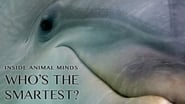
-
19. Inside Animal Minds: Who's the Smartest?
23 Apr '14What makes an animal smart? What forces of evolution drive brains to become more complex? Many scientists believe the secret lies in our relationships. Throughout the animal kingdom, some of the cleverest creatures—including humans—seem to be those who live in complex social groups, like dolphins, elephants, and apes. Could the skills required to keep track of friend and foe make animals smarter? To find out, NOVA goes inside the social lives of some of the smartest animals on the planet. Off th
-
NOVA (1974)
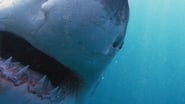
-
20. Why Sharks Attack
07 May '14In recent years, an unusual spate of deadly shark attacks has gripped Australia, resulting in five deaths in ten months. At the same time, great white sharks have begun appearing in growing numbers off the beaches of Cape Cod, Massachusetts, not far from the waters where Steven Spielberg filmed the ultimate shark fright film, Jaws. What's behind the mysterious arrival of this apex predator in an area where they've rarely been seen for hundreds of years? Are deadly encounters with tourists inevit
-
NOVA (1974)

-
21. Escape From Nazi Alcatraz
14 May '14Colditz Castle, a notorious prisoner of war camp in Nazi Germany, was supposed to be escape-proof. But in the dark days at the end of World War II, a group of British officers dreamt up the ultimate escape plan: in a secret attic workshop, they constructed a two-man glider out of bed sheets and floorboards. Their plan was to fly to freedom from the roof of the castle, but the war ended before they could put it to the test. Now a crack team of aero engineers and carpenters rebuild the glider in t
-
NOVA (1974)
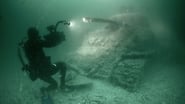
-
22. D-Day's Sunken Secrets
28 May '14On June 6, 1944, the Allies launched the biggest armada in history to invade the Normandy beaches and liberate Europe from the Nazis. In less than 24 hours, more than 5,000 ships crossed the English Channel, along with thousands of tanks and landing craft and nearly 200,000 men. Throughout the operation, hundreds of ships sank running the gauntlet of mines and bunkers, creating one of the world's largest underwater archaeological sites. Now, NOVA has exclusive access to a unique collaboration be
-





























